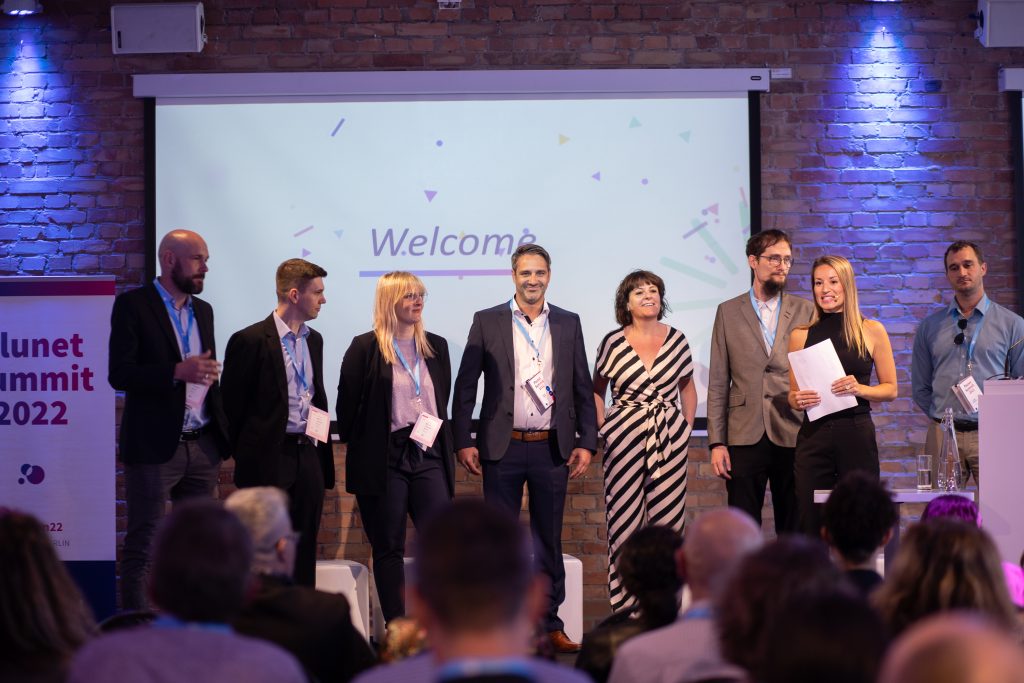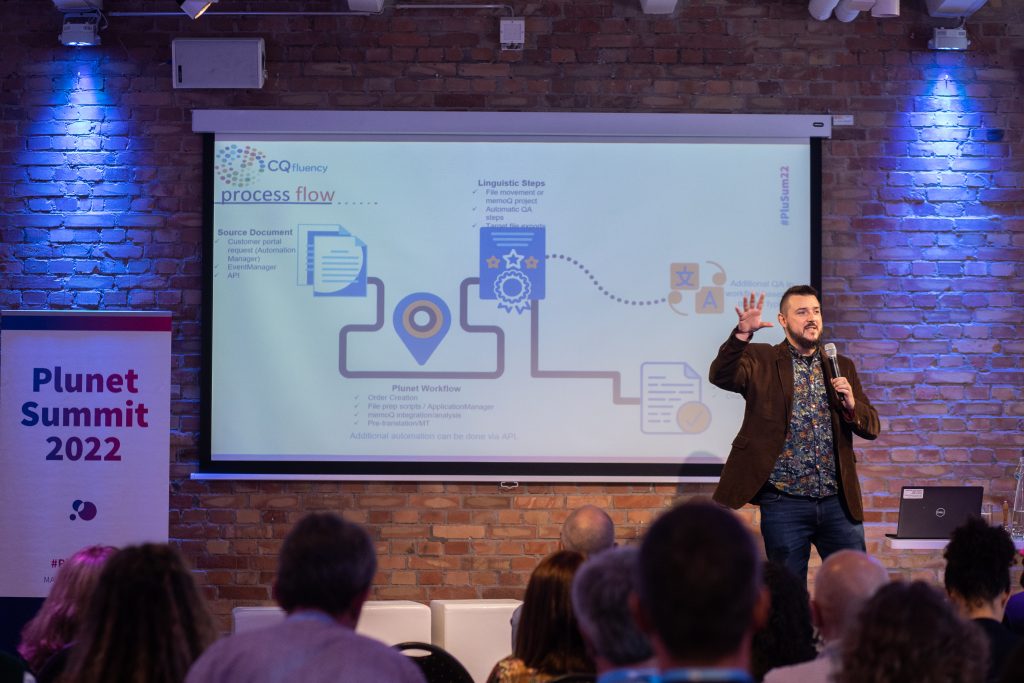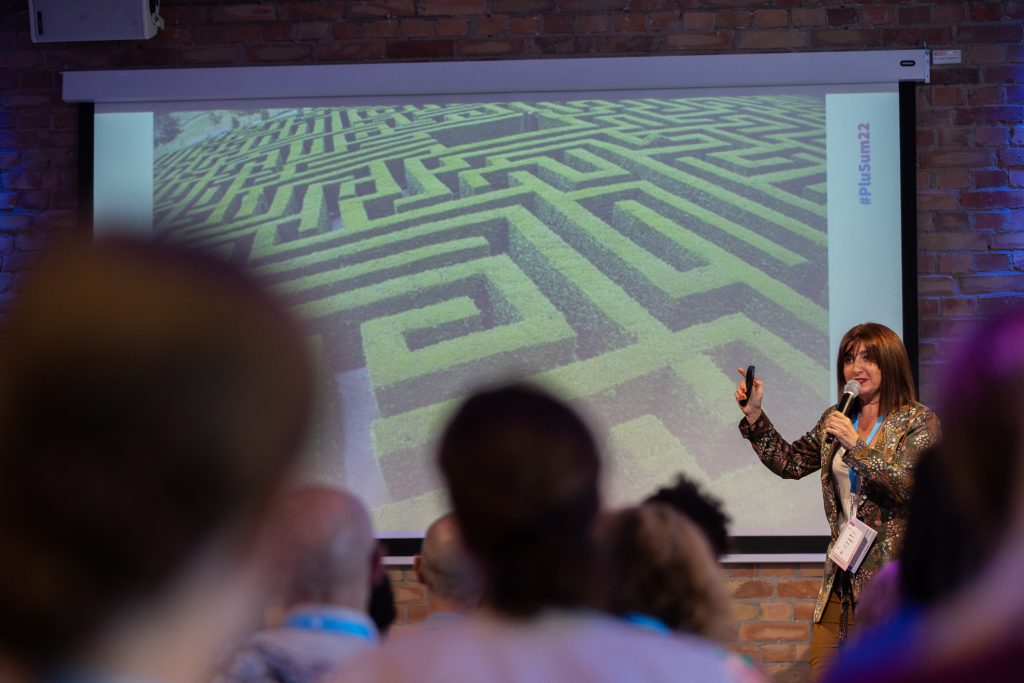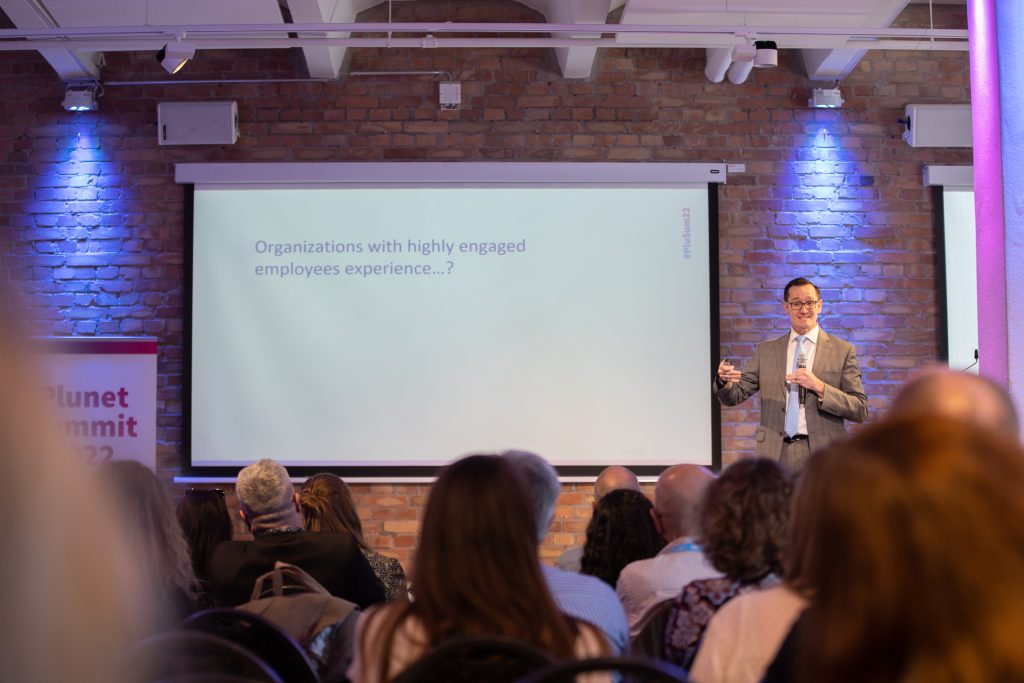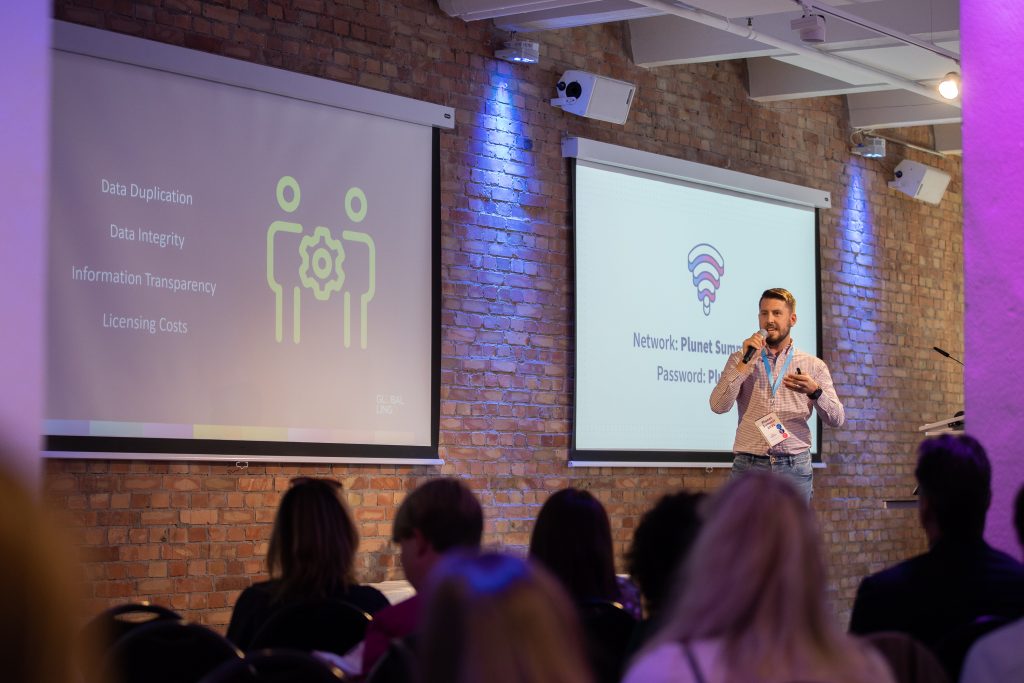Reconnecting after four years – Day 1
Our 3rd international Plunet Summit took place after an involuntary 4-year break and it could not have been a better event to reconnect with our amazing customers, partners, and colleagues.
Despite many uncertainties and external factors that made planning harder than usual, we were overwhelmed by the response and happy to celebrate the return of the event with 130 attendees from more than 20 countries around the world and a long list of take-aways and action items, of which we are trying to share as many as possible in this blog post.
The conference, designed for existing Plunet users who want to make the most out of their software, had a mix of best practices presentations from Plunet clients, interactive panels, onsite user workshops as well as our Plunet Connect roundtables on different topics that users could select ahead of the event.
Welcome Presentation and Themes for 2022
The conference started with a look back at the last years by our Global Head of Sales and Marketing, Sophie Halbeisen, touching on the influence of the pandemic, the war in Europe, and the three major themes that kept us – and our clients – up at night: Security, Growth, and Automation. Our main take-aways:
-
-
-
-
-
-
-
-
- Language services are not an option, add-on, or luxury good; they are essential, making
our industry resistant to crisis. Most of our clients remained stable and even grew over the
past years. - Most language services companies manage more than 90% of their projects in a TMS, so
having a software like Plunet in place became a necessity rather than UPS. - Remote work has shifted the conversation to server security and
infrastructure changes, and 70% of new clients chose a hosted solution today (vs. 20% in
2014)
- Language services are not an option, add-on, or luxury good; they are essential, making
-
-
-
-
-
-
-
Unboxing Plunet 9
The welcome presentation was followed by our product team, with Rosa Lopez, Head of Product, and Product Owner Kleio Mavridou revealing which features are going to be released with Plunet 9: new changes to password management and authentication for state-of-the-art security as well as features that allow for a fully automated project roundtrip from the client request to final delivery!
Best Practice: Running on AutoPilot – CQ fluency
Following the theme, the first speaker, the incredible Daniel Milczarski from CQ fluency, shared how they are using their “AutoPilot,” which does not replace humans but – just like on a plane – removes the requirements of constant manual control by a human project manager.
He broke the different levels of automation down to 5: PM assistance, Partial Automation, Standard Automation, High Automation, and Full Automation and shared what is needed to bring most projects to a level 4 and higher! The first step for automation is creating of workflow templates to kick off each project phase automatically. He further shared how the implementation of additional modules, most notably the dynamic CAT integration, but also the AutomationManager, API, and EventManager have helped create successful automation programs by automating request intake, project creation, CAT analysis, pricing, vendor assignment, as well as project delivery.
The biggest take-away for the audience was:
“You do not need a tech degree to create automation programs in Plunet: it takes some risks, trial and error, and a good portion of curiosity and passion for process automation!”
Best Practice: Automation of Low-Value Added Tasks – Nuadda
After a round of speed networking that allowed each attendee to find their program badge and our photographer to snap the amazing group photo above, the wonderful Arancha Caballero took the stage. She walked us through automation hacks that free up time for your team, which they can invest in the things that matter: fostering relationships with your clients and vendors. All tasks where a human does not add any value should be automated by every LSP, including:
- Moving files from A to B
- Copying and pasting information (such as work instructions)
- Creation of query logs
- Creation of folders
- Upload of CAT analysis logs
- Matching vendors based on project data
All of these tasks can (and should be!) done by your software so you can reap the benefits. Nuadda saw a 16% increase in production with the same number of PMs, which helps the bottom line and also benefits employees with a more interesting job that challenges their brain rather than their nerves!
Best Practice: Training Staff on Processes and Tools - International Translating Company
While on the topic of happier employees, the exceptional Daniel Doxey from International Translating Company dived into employee engagement and shared best practices for training and maintaining highly motivated teams.
Daniel shared how ITC implemented online training programs and growing video documentation of processes, which does not even need to be painfully maintained because the company fosters a culture of accountability. The key? Perfection is the enemy of progress – making everyone in the organization responsible for training material and video documentation of processes leads to valuable benefits:
- Improved engagement across the organization
- Simple and quick documentation that is free and saves time
- Reduced burden on trainers and managers
- Creation of an excellent start for formal process documentation
To put this into numbers: companies with engaged employees have 24% – 59% less turnover and 20% higher sales, so everyone was ready to record their videos as soon as they got home! And the most important take-away to remember:
“Quick and good training is better than a perfect, never completed training. If the training is perfect, you took too long to make it!”
Plunet API: Using the API to increase Sales Team Effectiveness – Global Lingo
The impressive Karl Eastwood from Global Lingo held the last best practice presentation of the day, who shared how sales process automation helped the company grow while combatting the rising cost of business development around the world. Using our Plunet API, Global Lingo has integrated their CRM to automate profile creation and data exchange between SalesForce and Plunet, leading to data consistency and time savings, which allowed the company to support their rapid growth.
“Our biggest take-away: before asking developers to code an integration, take the time to map out your (desired) processes in detail!”
Which tool is the source for your data? Which data do you need to pull/push from one system to the other? Which data needs to be exchanged dynamically? Once your processes are mapped, you can work with internal or external teams to build the connector you need for your business!
Plunet Connect Roundtables
After being inspired by our speakers, we moved to our interactive workshops, where each attendee could share their preferred topic. In a three round rotation, everyone got the chance to discuss topics from infrastructure and security to post-pandemic learnings or quality management in small teams. The format was possibly the most popular part of the event, as everyone got to share from own experiences while learning from others with similar interests. It felt like each roundtable was too short, and we could have gone on forever. As our Account Manager, Iryna, put it:
“It was inspiring and motivating to connect with the industry professionals who are so passionate about what they are doing and generously share their knowledge and insights, challenges and experiences.”
We are still convinced that this openness and willingness to share and learn together is a special trait of our industry!
Who will be the next Plunet Guru?
We planned something special for our most knowledgeable Plunet users to end the day,! Our first “Who will be the next Plunet Guru” game was a thrilling game show that put the bravest clients on the hot seat.
Five questions covering everything from Plunet features and thorny admin settings to Plunet history needed to be answered to make it to the “Plunet Million,” only supported by two lifelines: “ask the audience” for help by other Summit attendees that know the correct answer and “call your Plunet specialist,” which gave a direct line to the Plunet team member of choice.
Needless to say, we were impressed! Every candidate showed incredible in-depth knowledge of Plunet; one did not even need her last lifeline. Test your Plunet knowledge. Would you know the answer to the final question?

